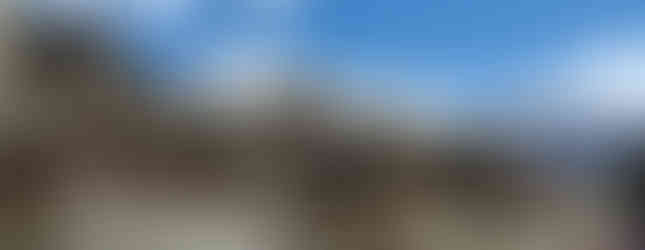The Nepali miracle
- Natalia Roman Lopez

- Oct 29, 2020
- 4 min read
Today a year ago an exploration adventure began - although at the time I called it 'a holiday'. By adventure I mean remoteness, endurance, hostile environments, altitude and a handful of unpredictability. No better place than Nepal mixes together all these components of an adventure.
The seed had been planted back in 2015 aka ‘the year of the earthquake’. Back then an extraordinary group of humans met to run/race around Manaslu. Among many friendships, the ‘Italian gang’ was born. We closed that chapter promising each other to meet again in the Kingdom of Mustang. And we kept that promise. Two years later we traded the hanging glaciers of an 8000m mountain, for the dust of a plateau at 4000m formed by the sediments of an extinct ocean. How marvelous!

In between these two trips, we organized a Swiss ski touring expedition to Langtang valley - which involved everything but skiing; a story for another day. One evening by the fire our mountain guide, Jordi dai, told us about Naar Phu; how this valley feels like being ‘200 years back in time’.

Nepal is a peculiar country. Only after three trips I felt sort of ready to take the lead and organize the next adventure. Planning is a thrilling journey. The levels of anticipation and excitement were high. The idea was to combine 4 ‘mini adventures’ in a single trip. First a solo two-day in & out to Annapurna base camp (ABC). Second, the Annapurna 50 race from our good friends Lizzy & Richard. Finally, the big stuff: to ‘use’ the comfort of Annapurna circuit to access Naar Phu and Tilicho.

I could write endless lines about the routes we took. I’m happy to answer questions, just drop me a note. In a nutshell, we spent 10 days at an average altitude of 4000m covering about 25km and +2000m daily crossing over 3 passes above 5000m. Our group was made of
4x Italian gang members, our friend and local guide Rashila, and the young porter Anil aka the next Kilian Jornet.
The most remarkable achievement wasn’t the sport performance side of things - which was superb. It was definitely the fact that we all avoided stomach, altitude, injury and chest/coughing problems. This was unseen. Hadn't we experienced hardship in our previous trips - from constipation to food poisoning, mysteriously lost gear, or even dislocated shoulders and broken fingers! - we wouldn't have been fully aware of this nepali miracle.

But there was something else that made this trip a true adventure and exploration. Few months before I had been diagnosed with type one diabetes. A long summer of racing had given me the confidence to push the 'limits' even further. Here some of the learnings and tips:
Plan, plan, plan! Plan for the possible, be ready for the impossible. Pack 3x supplies and split them first between your hand and checked luggage; and in different bags during the trip.
Teach your friends how to react in case of an emergency - ALWAYS carry cooled glucagon. I used the FRIO bags for that.
Prepare for an emergency situation such as a hospital stay or repatriation - which probably will never happen!
Good to know: a helicopter rescue is nowadays pretty common. All you need is MONEY (perhaps around 1500 USD) and good weather - which is quite common during the trekking season.
CGM vs METER
Dexcom CGM: no phone connection, no alarms for your followers. Therefore make sure your phone volume is loud at night and warn your roommates in advance.
Dexcom CGM worked like a clock even above the guaranteed altitude range
I was way less aware of hypos with the altitude - a proven fact I had read about. A couple of times I thought the sensor was wrong but the severe low was for real.
Your glucose blood meter could malfunction. When I needed it most, it turned out to be too cold... depending on the model, make sure to check what each error code means!
Remember: bring extra sensors, transmitter and batteries
FOOD
I wasn't low carb at the time - which honestly made managing food super easy. The risk is to cut your insulin enough not to be hypoglycemic during exercise or at night.
If LC or keto you will always find eggs, cheese and some veggies (very few). Meat only on main treks. I would recommend bringing some keto easy-to-pack food as trail snacks.
After giving it some thought, for future trips I will stick to cheese/tomato omelette for breakfast and eat a 'normal' (rice or noodle based) big meal as soon as I arrive to the destination for the day. Like that, you have plenty of time to correct the BG rise before bed and will benefit from the insulin sensitivity after exercise. I will for sure need some mental training to not freak out when I see those double arrows going up. Honestly, nutrition needs come first in these very demanding and harsh environments. At the end of the day it's a very short deviation from BG perfection :-)
INSULIN
Again, very important to consider I wasn't low-carb at the time. Should i do the same thing again I would need to cut both basal & bolus much less. The big advantage is that hypos wouldn't be a concern anymore.
I cut basal at least by half. Many days 2/3s. We never took a rest day in 10 days!
FYI any pharmacy in the world will dispense insulin in an urgency. That's useful is in Kathmandu or Pokhara - not in the middle of nowhere.
Something I would do differently: Start all the insulin pens you bring along. Cooling will be less of a problem. Throw away the remains after the trip.









































Comments